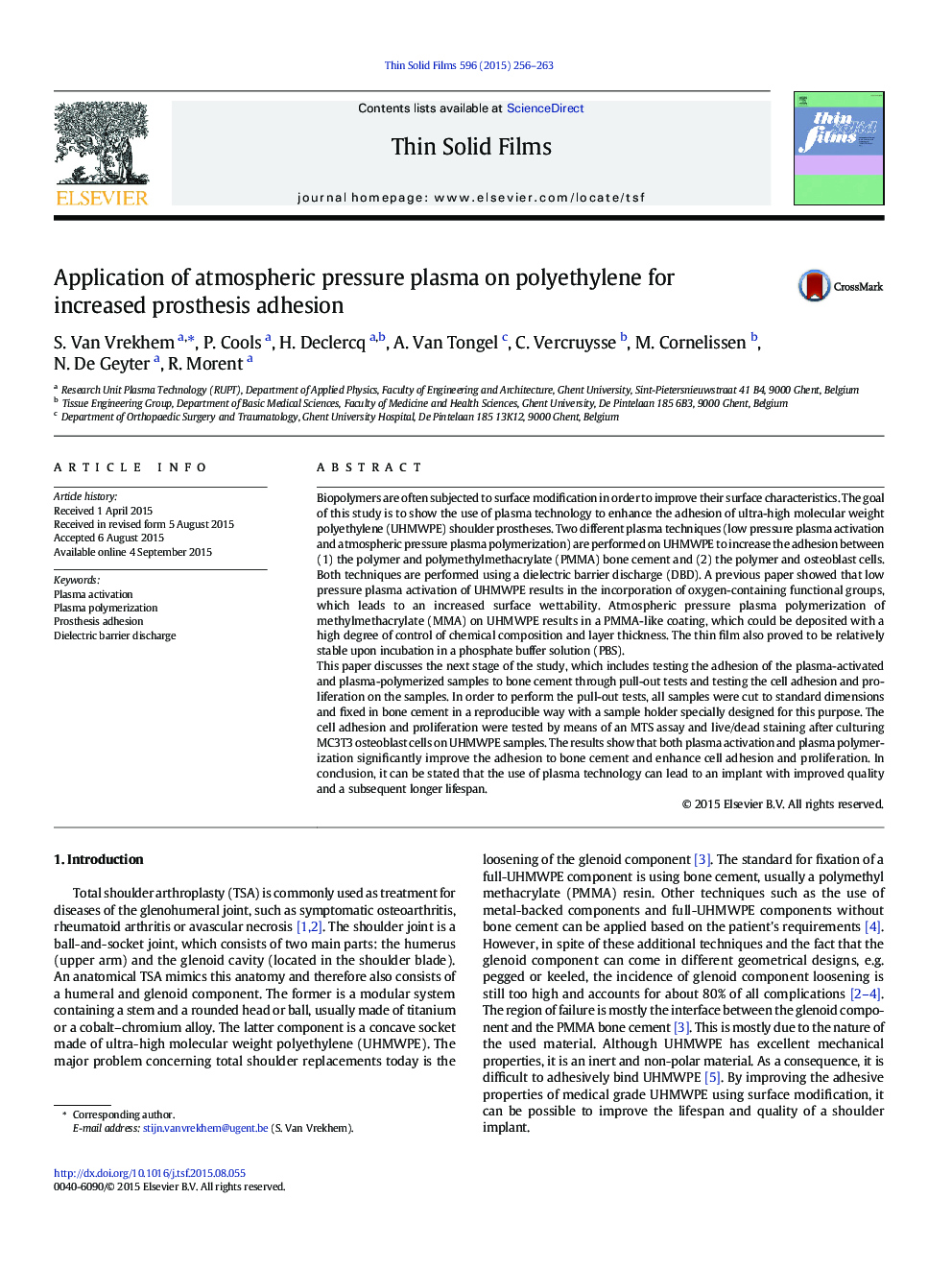| کد مقاله | کد نشریه | سال انتشار | مقاله انگلیسی | نسخه تمام متن |
|---|---|---|---|---|
| 1664535 | 1518013 | 2015 | 8 صفحه PDF | دانلود رایگان |
• Plasma activation increases adhesion to bone cement significantly.
• Plasma activation increases osteoblast cell adhesion and proliferation.
• Plasma polymerization of methymethacrylate (MMA) increases adhesion to bone cement.
• Plasma polymerization of MMA increases osteoblast adhesion and proliferation.
• The effect of plasma activation diminishes after storage for 48 h.
Biopolymers are often subjected to surface modification in order to improve their surface characteristics. The goal of this study is to show the use of plasma technology to enhance the adhesion of ultra-high molecular weight polyethylene (UHMWPE) shoulder prostheses. Two different plasma techniques (low pressure plasma activation and atmospheric pressure plasma polymerization) are performed on UHMWPE to increase the adhesion between (1) the polymer and polymethylmethacrylate (PMMA) bone cement and (2) the polymer and osteoblast cells. Both techniques are performed using a dielectric barrier discharge (DBD). A previous paper showed that low pressure plasma activation of UHMWPE results in the incorporation of oxygen-containing functional groups, which leads to an increased surface wettability. Atmospheric pressure plasma polymerization of methylmethacrylate (MMA) on UHMWPE results in a PMMA-like coating, which could be deposited with a high degree of control of chemical composition and layer thickness. The thin film also proved to be relatively stable upon incubation in a phosphate buffer solution (PBS).This paper discusses the next stage of the study, which includes testing the adhesion of the plasma-activated and plasma-polymerized samples to bone cement through pull-out tests and testing the cell adhesion and proliferation on the samples. In order to perform the pull-out tests, all samples were cut to standard dimensions and fixed in bone cement in a reproducible way with a sample holder specially designed for this purpose. The cell adhesion and proliferation were tested by means of an MTS assay and live/dead staining after culturing MC3T3 osteoblast cells on UHMWPE samples. The results show that both plasma activation and plasma polymerization significantly improve the adhesion to bone cement and enhance cell adhesion and proliferation. In conclusion, it can be stated that the use of plasma technology can lead to an implant with improved quality and a subsequent longer lifespan.
Journal: Thin Solid Films - Volume 596, 1 December 2015, Pages 256–263
